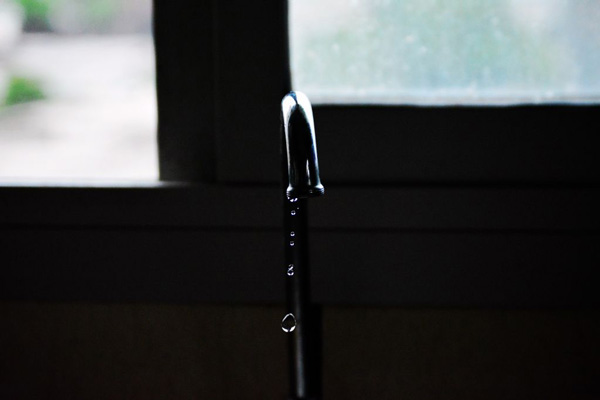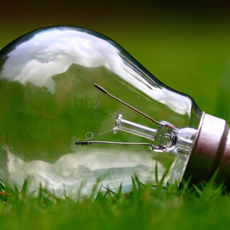
It’s not easy being green, and there’s a phrase for that: Analysts call it the “energy performance gap.”
Author Richard Conniff has an interesting article at Yale Environment 360 about this difference between the promise and the actual savings green buildings deliver. It seems that modeling systems don’t show how buildings really work.
That may well be, but Brian Baskin at The Wall Street Journal blames economies of scale and complex regulations, especially for the little guys. Green power has long been the domain of the giant companies, and the barriers to going green include things beyond the high initial cost.
“Companies — not just mom-and-pop operations, but multibillion-dollar brands as well — are finding it isn’t so easy to tap into solar or wind power,” Baskin writes. “It can require armies of lawyers, accountants and clean-energy experts to hammer out contracts with power producers and navigate a thicket of regulations that vary widely from state to state.”
But the small steps count, and for every energy-efficient product that facilities teams put into place, another building does something good for the environment while saving the building owner on energy costs.
Here are 15 products facility managers should consider if they want to score those incremental wins, too.
Water Conservation
The EPA reports that 17 percent of the nation’s public water supply is used by the commercial and institutional sector. While each facility uses water differently depending on its function, the largest draws are for
- restrooms (40 percent),
- cooling and heating (20 percent for hospitals and 28 percent for offices),
- and landscaping (schools are the biggest users at about 25 percent).
Restaurants use more water for kitchen and dishwashing (nearly 50 percent) than any other facility type.
But it’s fairly simple to reduce the amount of water any building uses.
Decorum Pint
One product making waves in water use reduction is the Decorum Pint by American Standard, a urinal with a hydraulic system that requires 87 percent less water than the standard urinal, which uses about one gallon per flush. Simply replacing all the urinals in one campus or office building will dramatically reduce water usage, and if no other changes are made, its effect on the water bill should be immediate and clear.
For facility managers thinking of replacing their existing water system with one that is low-flow, there’s ongoing research at Purdue University you may want to look at. Funded by the EPA, the research is led by assistant professor Andrew Whelton, and findings are that opportunistic pathogens multiply more easily in low-flow water distribution and plumbing systems.
The problem seems to be caused by the fact that, while water flow has diminished, pipe size has not, causing the water to age in the pipes. The project is looking at everything from decontaminating water chemically to changing the piping network design, with the goal to producing a model that provides safe, clean drinking water.
ETwater
Another water use reduction product is a controller that automates water delivery schedules by way of cloud-based smart irrigation.
ETwater puts information about your landscape needs together with weather events, so your watering schedule is automatically suspended when not needed. You can obtain reports showing you how much water you’re using with the controller in order to compare with past usage to see how much you’re saving.
Elastopave
Porous pavement technologies can help reduce or even eliminate the need for stormwater retention systems on your building’s property. There are other benefits too, according to BASF Construction.
Their pervious pavements, like Elastopave, are made from recycled glass. These are 38 percent porous (twice as much as the standard), leading to less stormwater runoff, less clogging and less required maintenance.
The building material itself uses about 90 recycled bottles per square foot: great for the earth in terms of less waste going to landfills, plus the material reflects sun, which in turn reduces the heat island effect.

Keeping it Cool or Warm
Sometimes, added cooling would be useful in a specific area or in a building with a minimum of installation space. There are also alternatives that in some climates can allow a reduction in mechanical cooling altogether.
MovinCool
Supplemental cooling has been offered by MovinCool since 1982, with portable air-conditioner solutions available for all applications. The units can also be used after-hours or on weekends, when the main cooling system is powered down, or in temporarily occupied spaces like classrooms.
When chillers are undergoing maintenance or back-up cooling is needed during an emergency, portable units can be invaluable.
While the savings may not be evident at first, supplemental cooling can save you from the expense of replacing an entire existing cooling system when all you need is to cool down hot spots.
Black Jack
A mobile fan isn’t a new idea, either, but Black Jack by Big Ass Fans can reduce your building’s reliance on air conditioning with its energy-efficient model that uses less power than a toaster.
This isn’t a desktop fan; it’s got a 6.5-foot frame and creates airflow to 120 feet. Fitted with rubber wheels, it’s light enough for one person to push it into place wherever it’s needed: shop floors, fitness centers, warehouse aisles or at an outdoor venue. It’s also quiet enough that conversations can be held right next to it while it’s running.
Trailblazer
Among other products, Daikin makes commercial HVAC solutions, including the Trailblazer air-cooled scroll chiller. The Trailblazer can be scaled to fit your needs, from a 10 to 240-ton range, and the unit offers a heat recovery system in which 45 percent of heat normally rejected can be used again, allowing for further savings.
The company’s case studies make interesting reading. A couple of student residences at Bethel University in St. Paul, Minnesota, for example, were uncomfortably humid. Replacing existing rooftop HVAC was done one building at a time, allowing for real-time comparison. The old equipment (with added fan coils in dorm rooms) maintained humidity levels of 80 percent, while the new Robel model (a unit with an extremely high integrated energy efficiency ratio) came in at less than 55 percent.
DriSteem
Save on energy costs with DriSteem’s flexible wetted media system. Installed in air handlers and ducts, the system uses heat in the air to evaporate water, reducing the building’s cooling load. Operation is continuous, as there are multiple stages of saturated media, each with its own pump.
This system is especially useful in facilities requiring simultaneous cooling and humidification, such as data centers, industrial manufacturing and printing facilities.
EOS
If you’re having problems with perimeter comfort, you may want to look at the EOS by Titus, a light-powered, energy-harvesting diffuser. Its technology allows it to automatically adjust, whether in its heating or cooling mode so that occupants are comfortable.
There’s a case study that outlines a situation in which the EOS is the perfect solution. When the Qube building in Detroit was remodeled, it kept its existing infrastructure. However, that dual duct system wasn’t enough to keep occupants with workstations near the single pane windows comfortable. The EOS smart system, designed to address those split compromises along windows, was installed. Now, heating and cooling is delivered automatically to those occupants, and the unit runs on solar power, reducing energy costs.
Rollshutters
Rollshutters are products that can serve several purposes: They provide shade as well as storm protection, and can be useful for privacy and security. Talius has been making rollshutters and habitat (see-through) screens for 30 years and notes that businesses and schools use them as much as private homes.
The rollshutters, which are insulated to block out both heat and cold, are mounted on the exterior of a building’s windows, and are much more effective than interior window treatments. Heat loss at night is reduced by 20 percent when the rollshutters are closed, which in turn reduces heating energy use.
A company case study describes one high school’s foyer windows as a problem. While allowing lots of natural light, they also made intense glare and temperature spikes an issue. Rollshutters immediately solved those problems and had the added benefits of reducing vandalism and increasing security at night.
enVerid HVAC Load Reduction
One problem with traditional HVAC systems is that they typically replace indoor air with fresh air every two hours to limit pollutants. In summer, this means there’s a constant high volume of outdoor air that needs to be cooled. A Facility Executive article explains how one business decreased its energy costs and kept occupants comfortable by installing a system that cleans and recycles indoor air instead of replacing it.
Made by enVerid, HVAC load reduction technology decreases outside air intake by as much as 80 percent, reducing peak HVAC capacity, with energy savings of up to 30 percent and reducing utility demand charges by nearly half. The less air it brings in from outside, the longer the life of the system’s air filters, the less water it uses and the longer the overall life of the HVAC equipment.
VFDs for HVAC Systems
If the speed of the fans and pumps in an HVAC system is not modulated, you may be losing money. Variable frequency drives (or inverters) can work alone or in conjunction with a building management system to control the speed, maximizing energy savings. Honeywell has a savings estimator that lets you calculate the estimated annual savings for VFDs on HVAC applications.
Roof Hugger
Roof Hugger can re-roof your existing metal roof by installing a new one over it. This simple method saves labor, is code-compliant and strengthens the purlin framing while maintaining the integrity of the original design loadings. It allows for insulation, so it stays cooler in warm weather and warmer when it’s cold outside. Solar photovoltaic electric systems can be installed, too, which may add tax breaks and grants along with savings in energy costs.

Power and Light
Cii Modules
Cii Communications offers modular applications for power, voice and data requirements. Cii Communications’ ReVolt Control is a plug and play solution perfect whether reconfiguring an existing space or building a new one. The systems work above the ceiling and under the floor. Quick to install, Cii modules reduce labor costs and preserve cable management. You’ll save as much as 50 percent on material costs and up to 25 percent in power consumption on a fully implemented system.
Modular systems also have much less of a negative environmental impact than conventional electrical wiring and cabling, which uses lead and PVC (two materials that are difficult to recycle and are top offenders when it comes to air pollution, global warming and toxic releases).
Wattstopper
Human-centric lighting has taken a step forward with Legrand’s Wattstopper. The platform is versatile enough to enable natural tunable lighting in two- and three-channel solutions with management switches that can work together or separately. Energy efficient and scalable, with a wireless mesh network for multiple rooms, the Wattstopper line can be used for any commercial lighting.
Emergency Lights from IOTA
What do you do when the lights go out?
While this may not be an energy-saving product at first glance, the fact that the same fixture can be used for both normal and emergency operations does save the cost of a separate backup system.
From IOTA, it is the emergency ballast for fluorescent and LED retrofits. The l-320-HE switches to emergency mode in the event of power failure. It then operates one of the existing lamps for 90 minutes. It can be used in damp locations and can be mounted on top of the fixture or in the wireway. Each unit contains a battery, charger and inverter circuit.
Credits:
Ashes SitoulaNASA
Edouard TAMBA

